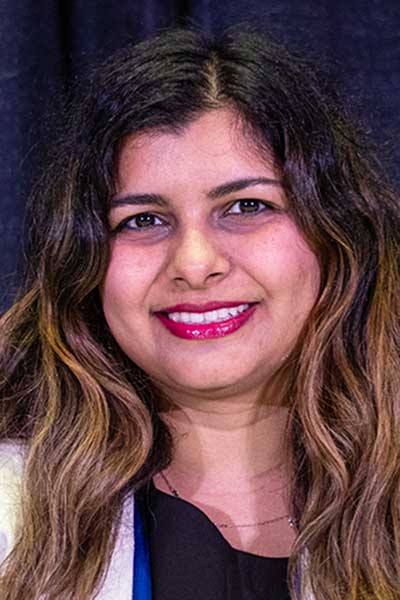Rheumatologists too often downplay the orofacial complications of Sjögren’s disease, scleroderma, and other connective tissue manifestations of systemic sclerosis (SSc). The vast majority of patients with SSc experience oral symptoms, but rheumatologists are seldom trained to examine, or even consider, the oral cavity.

“Oral complications of systemic sclerosis are fairly well known,” said Andrew Leask, PhD, Professor of Molecular Genetics and Cell Biology, College of Dentistry, University of Saskatchewan, Canada. “Up to 80% of patients will experience xerostomia, dysphagia, microstomia, thickened and tight facial skin, tongue rigidity, symptoms throughout the oral cavity.”
Dr. Leask opened a session on one of the most common and least discussed aspects of SSc during Say Cheese: Oral Health in Scleroderma and Sjögren’s Disease on Wednesday morning during ACR Convergence. Recorded sessions from ACR Convergence 2025 are available on demand to all registered meeting participants through October 31, 2026, by logging in to the meeting website.
The problem is lack of education, Dr. Leask explained.
Rheumatologists are seldom focused on oral health. Dentists, who routinely see dry mouth, tightening and stiffening of the lips and tongue, and patients who do not brush their teeth because they cannot grasp a toothbrush or open their mouth widely seldom recognize these common signs of SSc.
Scleroderma, for example, is characterized by fibrotic changes of the skin and organ systems, including facial skin and connective tissue. Oral manifestations result from deposits of collagen in the tissues or collagen deposition around nerves and vessels affecting all oral tissues.
Fibrosis in the skin and connective tissue around the mouth can lead to restrictions in opening the mouth. The tongue muscle may be thickened and shortened, further restricting mobility. Depending on the disease, salivary glands may be destroyed (Sjögren’s disease) or atrophied due to fibrosis (scleroderma). Oral lesions are common, as is tooth loss due to periodontal disease and changes in the periodontal membrane.
Oral symptoms of SSc have been reported since the 1940s, Dr. Leask noted. More than a half-century later, a standardized oral scoring system — the mouth handicap in SSc (MHISS) scale — was published in 2007, but it has yet to be widely adopted in clinical trials or practice.
Elevated levels of matrix metalloproteinase-9 (MMP-9) and CXCL-4 correlated with early disease and periodontal parameters, Dr. Leask continued. Fibrosis affecting the orofacial region results in a mask-like facial appearance, loss of facial expression, and reduction in mouth opening. Difficulty opening the mouth can reduce food intake, as well as interfere with the ability to chew, swallow, and speak.
“These symptoms are a significant cause of stress and anxiety on a day-to-day basis for patients,” Dr. Leask said. “Increased awareness by dentists and rheumatologists is important, both clinically and for a patient’s quality of life.”
Rheumatologists are beginning to pay attention. A 2023 survey of ACR Convergence attendees found that the most common oral symptoms seen in routine practice were gum inflammation, dry mouth, oral ulcers, and temporomandibular joint (TMJ) pain. The majority of rheumatologists responding (61%) said they communicate with dental providers.

“The other 39% of rheumatologists should also be talking to dental providers,” said Natalia Trehan, DMD, Assistant Professor of Dental Medicine, the James B. Edwards College of Dental Medicine, Medical University of South Carolina. “When we asked patients where they got information on their mouth and dental problems, just 1% said they had talked with their rheumatologist.”
Both Sjögren’s disease and scleroderma have common oral symptoms, but pathology and symptom patterns are distinct.
The primary Sjögren’s disease pathology in the oral cavity is lymphocytic destruction of salivary glands, while scleroderma features fibrosis of skin and connective tissues.
Individuals with Sjögren’s disease have markedly reduced oral moisture due to autoimmune destruction of the salivary glands, with major and minor glands tender and inflamed. Parotid enlargement is common, and microstomia is rare. There are no specific radiographic findings, and oral hygiene is challenged due to hyposalivation. The treatment focus is to stimulate and/or replace saliva.
Scleroderma patients may have reduced oral moisture due to fibrotic atrophy of the salivary gland. Parotid enlargement is rare, and microstomia is common. Radiographic findings include a widened periodontal ligament and mandibular resorption. Oral hygiene is challenged due to limited mouth opening and rigidity. Treatment focus is increasing the oral opening and managing fibrosis.
“We are all collaborators in improving our patients’ oral health,” Dr. Trehan said. “For people with Sjögren’s disease or scleroderma, better oral health equals better rheumatologic health.”
Don’t Miss a Session

If you weren’t able to make it to a live session during ACR Convergence 2025 — or you want to revisit a session from the annual meeting — make plans to watch the replay. All registered participants receive on-demand access to scientific sessions after the meeting through October 31, 2026.
